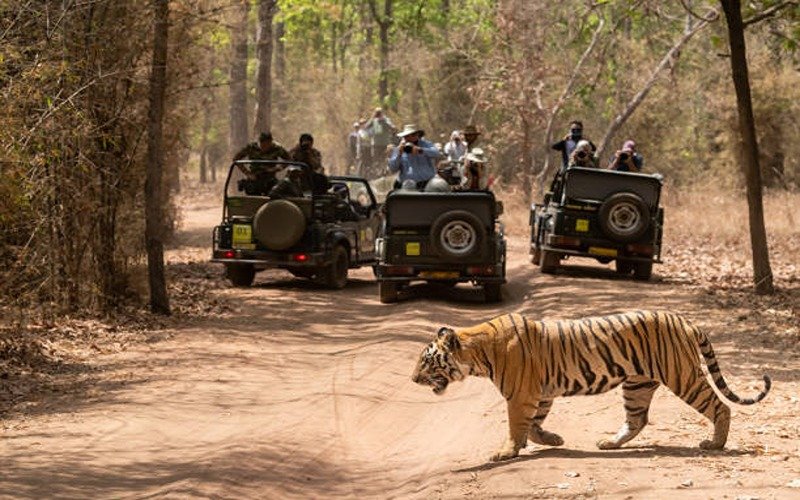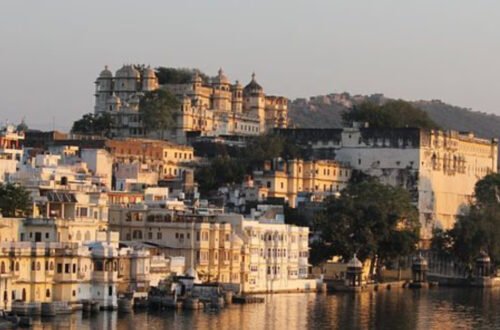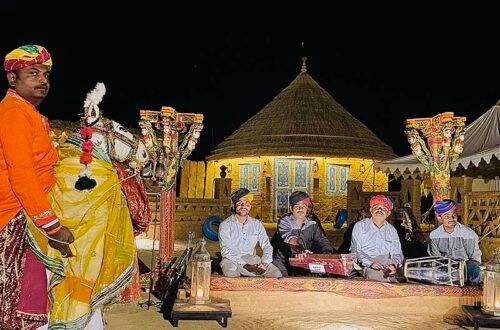Planning a wildlife safari in India often leads travelers to the iconic Ranthambore National Park, one of the best places in the world to see tigers in the wild. Located in Rajasthan, this renowned park offers a blend of rich biodiversity, historical ruins, and royal heritage, making it a top destination for nature lovers and photographers. To make the most of your experience, understanding the best time to visit Ranthambore is essential. Whether you’re a seasoned wildlife enthusiast or a first-time visitor, timing your visit correctly can transform your safari into a once-in-a-lifetime experience.
Ranthambore experiences three major seasons—summer, monsoon, and winter. Each season brings a unique charm to the park, but if you’re aiming for optimal tiger sightings and a comfortable safari experience, choosing the right time becomes crucial. The park remains open to visitors from October to June, with varying conditions and advantages across the months. Visitors keen on both wildlife encounters and luxurious hospitality often prefer to stay at the Best resort in Ranthambore to enhance their travel experience.
October to February: The Peak Season for Wildlife Enthusiasts
The months between October and February are widely regarded as the most favorable time to visit Ranthambore. With temperatures ranging between 10°C and 30°C, the weather is cool and pleasant—perfect for jeep safaris and long hours of wildlife watching. During this time, the forest is lush and rejuvenated after the monsoon rains, creating scenic backdrops for photography.
This is also when animal activity is more predictable. Tigers and other big cats are often spotted basking in the sun or roaming the grasslands, and bird watchers are in for a treat as migratory birds flock to the region. Sightings of leopards, sloth bears, hyenas, and marsh crocodiles are more common, and the likelihood of encountering a tiger in its natural habitat is significantly higher. This period also coincides with the peak tourism season, so advance reservations are strongly recommended.
March to June: Ideal for Serious Tiger Spotters
The summer months from March to June are hotter, with temperatures soaring up to 45°C in May and June. While the heat may seem discouraging to some, this is actually the best time for frequent tiger sightings. As water sources dry up, wildlife tends to gather around the remaining water bodies, making it easier to spot elusive animals like tigers, leopards, and wild boars. Early morning safaris offer a better chance to witness the park’s predators in action.
The reduced vegetation also improves visibility, allowing visitors a clearer view of the terrain and its inhabitants. If you can brave the heat, you’ll find fewer tourists, quieter zones, and excellent opportunities for photography. For travelers who prioritize comfort even during summer, it’s worth considering to Book Luxury Tent in Ranthambore for a cooling retreat after a warm day on safari.
July to September: Monsoon Closure and Eco-Tourism Focus
From July to September, Ranthambore National Park remains largely closed to tourists due to the monsoon season. Heavy rainfall during these months makes safari routes inaccessible and increases the risk of landslides and muddy paths. However, this is the breeding season for many species, and nature thrives during this time.
While core zones are shut, some buffer zones may remain open under the Forest Department’s supervision, primarily for eco-tourism and educational visits. For nature photographers and those studying flora and fauna, this period provides a unique lens into the regeneration of the forest. However, general tourists looking for tiger sightings should avoid visiting during these months.
Recommended Safari Experience for Every Season
- Winter (Oct–Feb): Ideal for families, bird watchers, and first-time safari-goers. Pleasant climate and scenic views.
- Summer (Mar–Jun): Best for photographers, tiger enthusiasts, and experienced wildlife travelers willing to tolerate high temperatures for better sightings.
- Monsoon (Jul–Sep): Suitable for environmental researchers and those interested in forest ecology rather than safari experiences.
Additional Travel Tips for a Memorable Ranthambore Safari
- Always book safaris in advance through authorized portals to ensure zone allocation and timing preferences
- Morning safaris begin early, usually around 6:30 AM. Arrive at the gate at least 30 minutes early for formalities
- Wear neutral-colored clothing like beige, brown, or olive green to blend in with the surroundings
- Carry essentials such as binoculars, cameras, hats, and water bottles, especially during summer visits
- Respect the rules of the park—do not litter, stay within designated zones, and avoid loud noises
For those looking to complete their Ranthambore adventure with a guided wildlife tour, it’s best to Book Jeep Safari in Ranthambore. These safaris are led by trained naturalists and provide intimate access to various zones within the park, increasing the chance of observing tigers and other wildlife up close.
Final Thoughts: Timing Shapes the Safari Experience
In conclusion, the best time to visit Ranthambore depends on what you’re seeking from your wildlife adventure. For a comfortable and picturesque experience, visit in winter. If tiger spotting is your top priority, brave the summer. Avoid monsoon season unless you’re an eco-tourist. With proper planning, thoughtful timing, and the right accommodation and safari bookings, your Ranthambore safari can turn into a truly unforgettable encounter with India’s wild heart.





